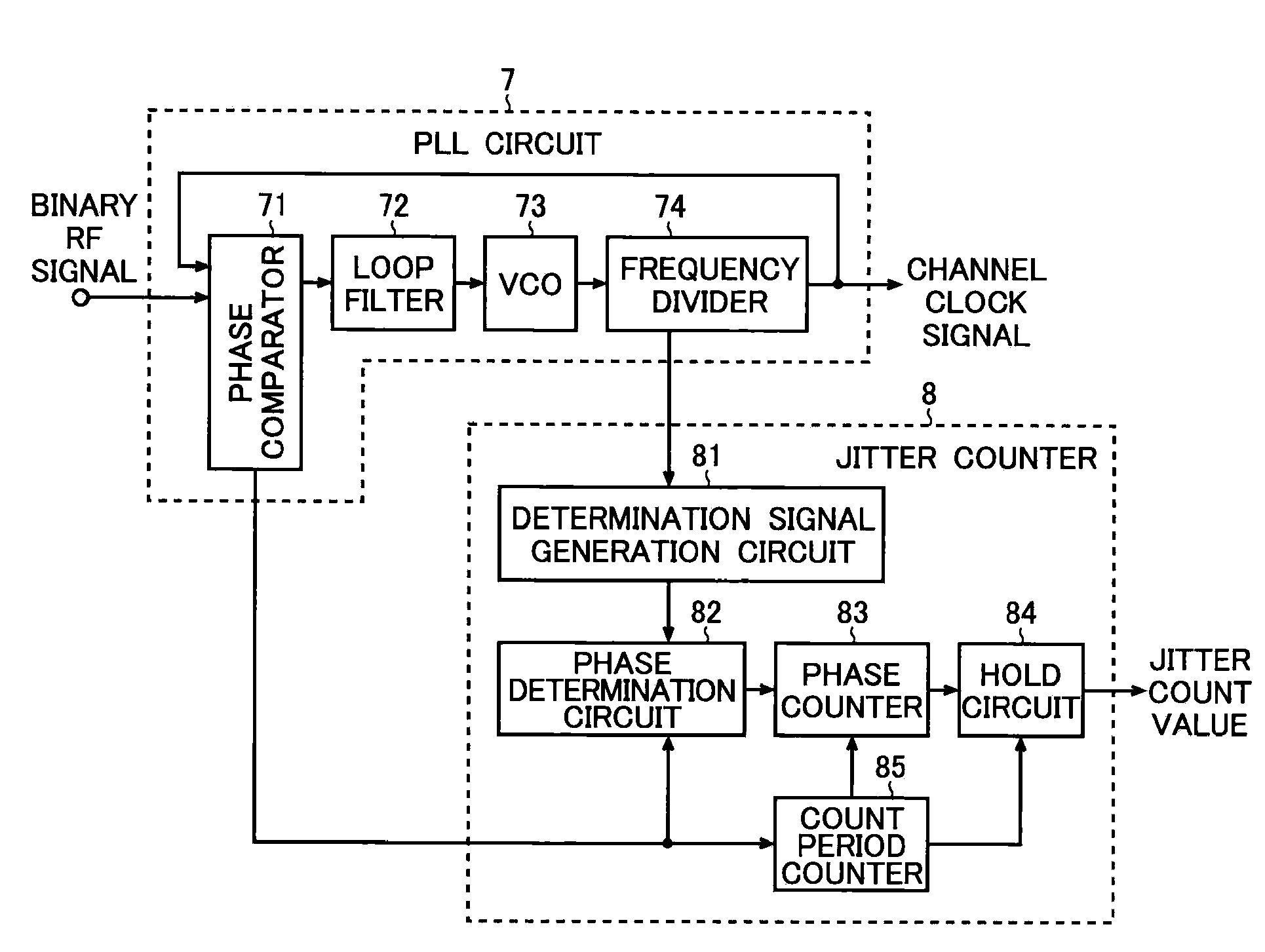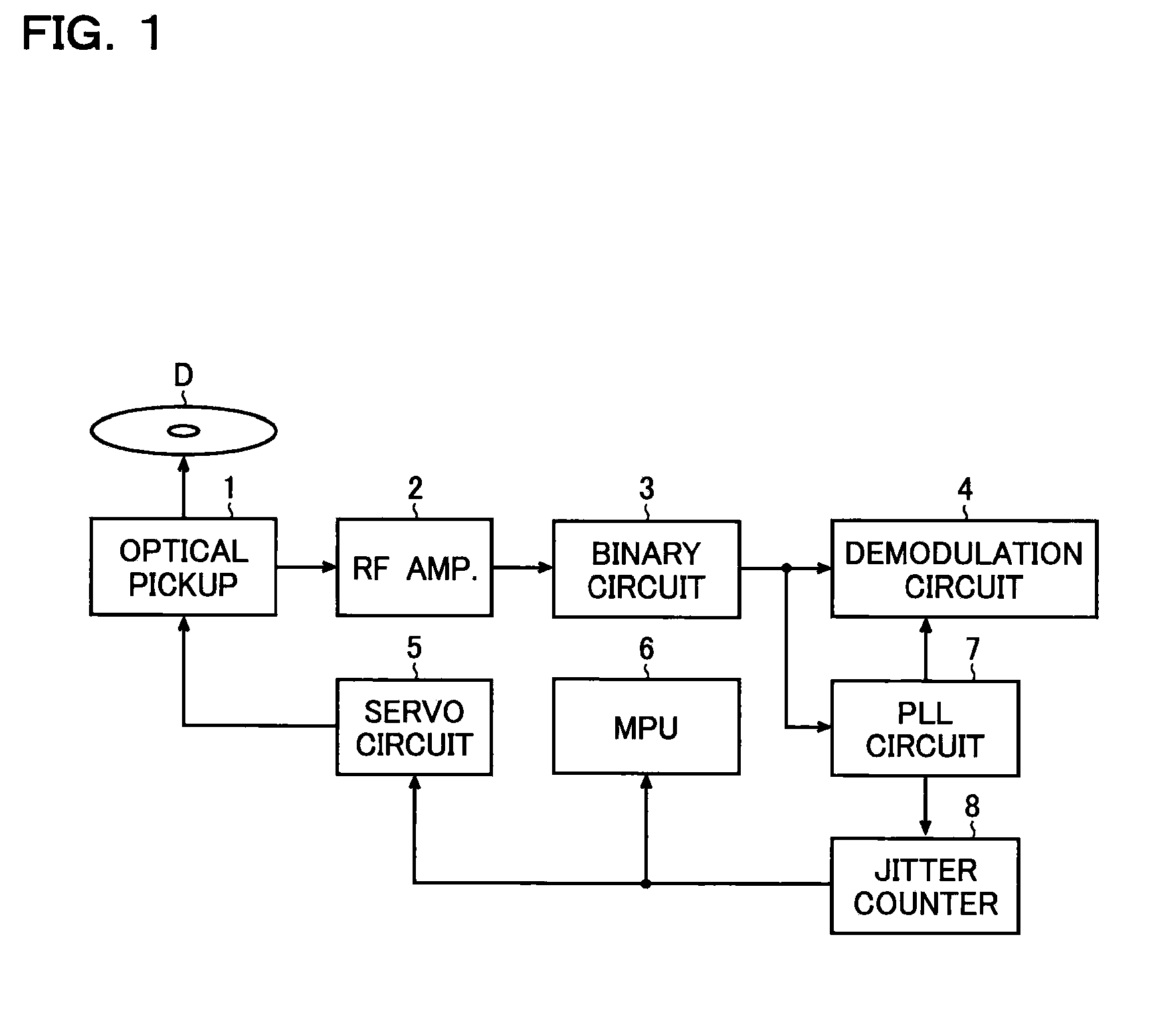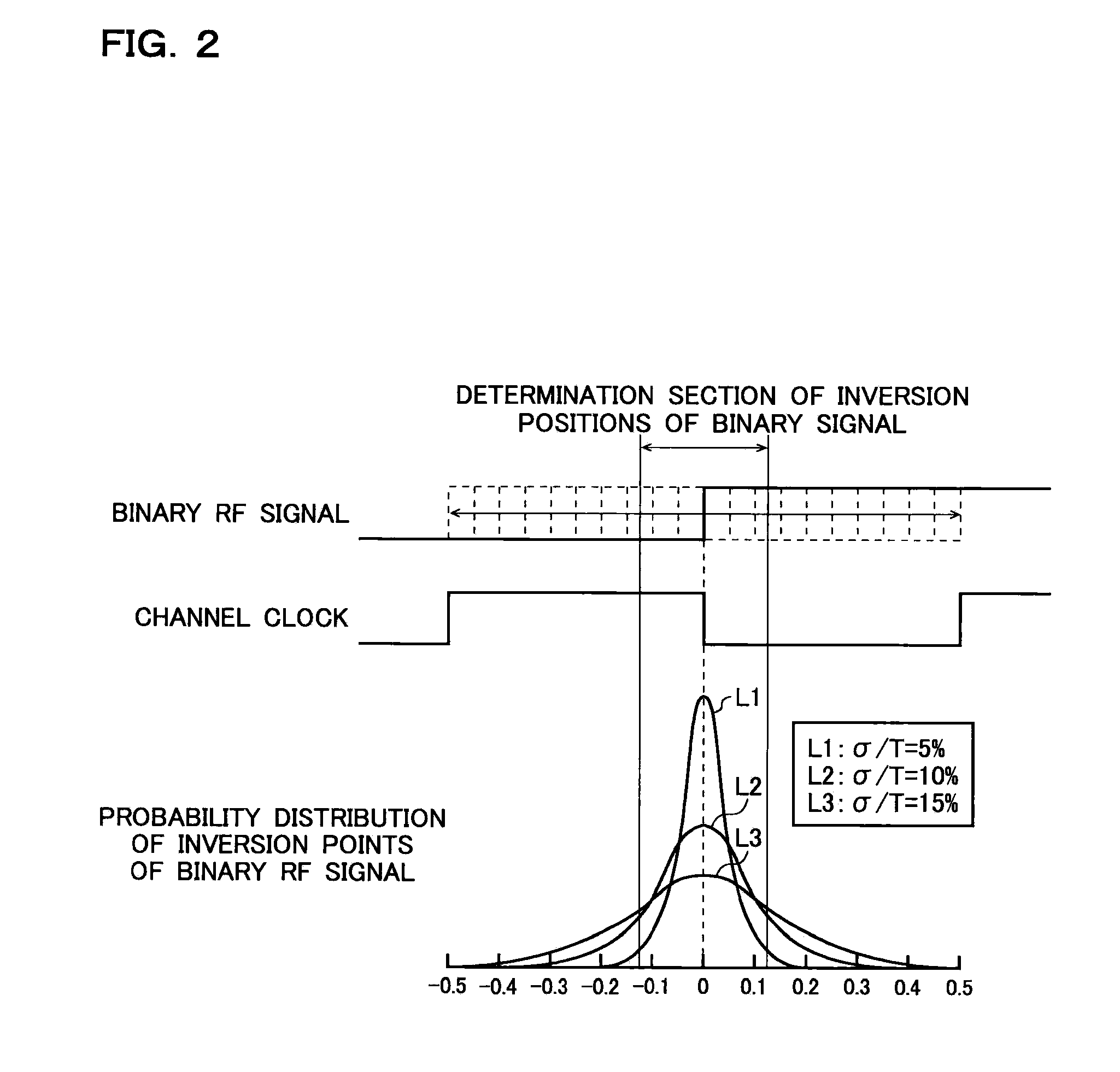Jitter Counter And Optical Disc Apparatus Using Same
- Summary
- Abstract
- Description
- Claims
- Application Information
AI Technical Summary
Benefits of technology
Problems solved by technology
Method used
Image
Examples
Embodiment Construction
[0024]Hereinafter, the present invention is described in detail using an example in which a jitter counter according to the present invention is incorporated in an optical disc apparatus.
[0025]FIG. 1 is a block diagram showing an embodiment of an optical disc apparatus according to the present invention.
[0026]As shown in FIG. 1, an optical disc apparatus according to the present invention comprises an optical pickup 1, an RF amplifier (amp.) 2, a binary circuit 3, a demodulation circuit 4, a servo circuit 5, a microprocessor 6 (hereinafter, called an MPU [Micro Processing Unit]6), a PLL circuit 7, and a jitter counter 8.
[0027]In reproducing data from an optical disc D, the optical pickup 1 is means that directs a light beam to the optical disc D and generates a reproduction RF signal depending on intensity of the reflected light.
[0028]The RF amp. 2 is means that applies waveform equalization processing to the reproduction RF signals to equalize the amplitude levels.
[0029]The binary ...
PUM
 Login to View More
Login to View More Abstract
Description
Claims
Application Information
 Login to View More
Login to View More - R&D
- Intellectual Property
- Life Sciences
- Materials
- Tech Scout
- Unparalleled Data Quality
- Higher Quality Content
- 60% Fewer Hallucinations
Browse by: Latest US Patents, China's latest patents, Technical Efficacy Thesaurus, Application Domain, Technology Topic, Popular Technical Reports.
© 2025 PatSnap. All rights reserved.Legal|Privacy policy|Modern Slavery Act Transparency Statement|Sitemap|About US| Contact US: help@patsnap.com



